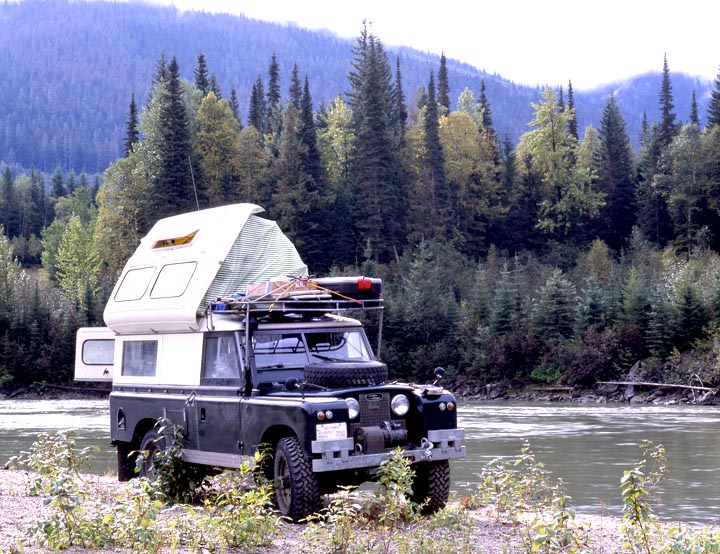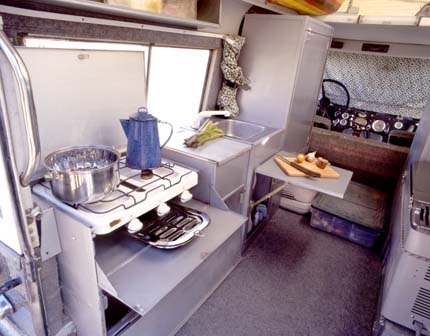I agree with the general consensus the the best vehicle depends upon where you are going, how long you will be about it and what features are important to you while being about it.
I think about 80% of my trip driving is going between places I want to visit and photograph and some of those places I want to visit are on paved and maintained dirt roads.
Sometimes I think I would be best off with a diesel Sprint based RV. A front & rear winch, tall tyres might even get me into places that are considered easy off roading. But I do like to visit places that are a bit more remote with medium & sometimes difficult off road trails to get there. So my vehicle is set up for worst case just because i don't want to be restricted from places I like to go.
We all need to start with some platform. I started out with my farm work truck, a 1960 long wheelbase Land Rover. It was stock with a winch on the front that got used mostly for stringing fence or getting my tractor (Ford 631) unstuck. I already had the truck so it seemed to be a good place to start.
I started by throwing my back packing gear & camera in the back and just going out on trips.
My philosophy is to learn how to drive my vehicle to its limits, learn those limits and
THEN to make modifications as needed when I wanted to go beyond the vehicle's limits. And if I break something more than once to upgrade what I broke so it wont brake again.
Anyone with deep pockets can buy a vehicle and throw a a lot of money on do-dads without knowing if they are needed or even if they will all work together on that vehicle in the places they envision going.
I think the key is going places you want to go, learn how to best handle your vehicle under those conditions and make modifications when you reach limits that you want to go beyond. Sometimes it means abandoning your base vehicle and starting all over again with one that experience has taught you better fits your needs. Sometimes it just means incremental upgrades over time as experience says an upgrade is needed.
Long wheelbase Land Rovers are notorious for breaking rear axles so swapping the stock LR axle assembly with the heavy duty version (dana 60 built under license) was one of my first modifications.
My vehicle camping style epiphany came when I was in a campground. I was sitting on a my sleeping bag which was on a small ground cloth, cooking a freeze dried meal on my Svea 123 single burner stove when a Honda Civvic pulled into the next camp site. Out came a tent, cots, chairs, table, multiple lanterns, ice box, big Coleman stove and more.
So here I was holding a pan from my mess kit over a single burner camp stove, cooking in the dark, waiting for my meal to cook so I could heat some water for a cuppa tea. I looked at my camp site, looked at their camp site. looked that their little Honda then at my big 109 Land Rover and suddenly figured out what was wrong with this picture. I really didn't have to car camp using the same gear I used hiking the Yosemite high country. Duh!
So I switched over to vehicle camping gear. 3 or 4 years later I found myself setting up camp at night during a windy rain storm. I got my tarp mostly hung as an awning when a gust pulled a corner out of my hand. The tarp whipped about knocked off my propane lantern which broke and caught the tarp on fire (quickly extinguished). I slept inside the Land Rover and camped inside as the rain continued for the next few days. It was awfully uncomfortable and i was catching my hair on the roof vents on too regular a basis. So I made the decision to convert my Land Rover into an RV.
Since I like to cook and like my comfort I made the interior as comfortable as I could (I like to play house on the trail).
All this is a long winded way of saying I was lucky to have started with an good solid easily extensible vehicle platform, used it to its limits and extended those limits I wanted to go beyond in travel capability, reliability and comfort. Not all at once but gradually as I learned the limits and evolved my travel style.
You can spend a lot of money all at once on a platform that may or not meet your needs, may or not be comfortable enough and may or not be reliable when finished or you can take it slowly starting with a stock or near stock vehicle, learn what it can do, change horse early on if needed then modify that vehicle to best fit your needs. Learn your needs, your vehicle's capabilities first then modify to meet those needs.






